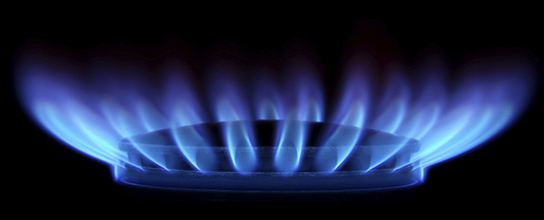Account & Billing
View or Pay Bill
Billing & Payment Hub
Energy dashboard
Business Rate Options
Account details
Savings & Energy solutions
Small & Medium Business Solutions
Commercial & Industrial Business Solutions
Multifamily Property Management
Rebates & Discounts
Renewable Energy Programs
Demand Response Program
Electric Vehicle Support for Business
Outages & Safety
Report an Issue
Emergencies
Outage Credits
Scheduled Outages
Tree Maintenance
Large Natural Gas Opt-Out FAQs
Large Natural Gas Opt-Out FAQs
Does the Large Natural Gas Opt-Out program apply to my electric accounts?
No, this program only applies to your natural gas accounts. If you like, you can also apply to the Electric Self-Directed program, a similar program for electric accounts. Or you can continue to participate in our electric energy efficiency programs.
If I later change my mind, can I opt back in to the energy efficiency program?
Yes. We like working with you to save your business energy, and we’ll welcome you back. You’ll just need to fill out a simple form and return it to us at the address provided on the form. Then you’ll resume paying the energy efficiency surcharge retroactive to January 1 of the year you opt back in.
You will, after this, no longer be eligible for the Large Natural Gas Opt-Out program. But you’ll again be able to participate in our many energy efficiency incentives, rebates and other energy savings programs.
You will, after this, no longer be eligible for the Large Natural Gas Opt-Out program. But you’ll again be able to participate in our many energy efficiency incentives, rebates and other energy savings programs.
Can I add additional accounts later to the Large Natural Gas Opt-Out program?
Yes, no problem. Simply fill out the same request form then return it to us at the address provided on the form.
How many of my accounts can I include in the Large Natural Gas Opt-Out program?
As many as you like, as long as all meet the eligibility requirements.
If I participate in the Large Natural Gas Opt-Out program, can I still receive incentives and rebates on my electric accounts with Consumers Energy?
Yes. Unless you’ve also applied to the Electric Self-Directed program, you remain eligible for all electric energy efficiency incentives, rebates and other electric programs.
How will my savings be evaluated?
We’ll review your annual reports to make sure you’ve properly documented your savings. Sometimes, we may need to conduct a field verification and evaluation.
Can savings in excess of one year’s goal be carried forward?
Yes. If your energy efficiency measures exceed the current reporting year’s required savings, you can claim or defer the excess to a successive year, not to exceed four consecutive years following the year in which the savings occurred.
To be eligible for deferral, efficiency measures have to have a lifespan of six or more years. They can’t be changes in maintenance only, or changes in operating practices that are not accompanied by new physical energy management controls or systems.
Excess savings deferred to a future plan year must begin with the first successive year and be used in the shortest time period possible. Excess savings expire upon termination of the opt-out status. Report the distribution of excess savings in your first annual report following installation of the eligible measure. Once declared, the savings distribution can’t be revised.
To be eligible for deferral, efficiency measures have to have a lifespan of six or more years. They can’t be changes in maintenance only, or changes in operating practices that are not accompanied by new physical energy management controls or systems.
Excess savings deferred to a future plan year must begin with the first successive year and be used in the shortest time period possible. Excess savings expire upon termination of the opt-out status. Report the distribution of excess savings in your first annual report following installation of the eligible measure. Once declared, the savings distribution can’t be revised.
Can recurring energy savings count toward required savings in future years?
No. Unlike excess savings, which may be deferred (see previous question), recurring savings from the same energy efficiency measure apply only to the year in which they are installed. We very much hope that most of your savings are indeed recurring. However, we want you to find additional energy efficiency savings each year, just as we do with our energy efficiency programs.
What happens if I do not meet my minimum energy savings requirement?
The Michigan Public Service Commission reviews your annual report of your energy efficiency programs, just as it does with Consumers Energy. If your savings fall short of the required 0.75% annual improvement, the Commission may hold a hearing and may require you to opt back in to our program and pay the surcharge and energy efficiency programs. At that point, you’d again become eligible for all of our natural gas energy efficiency rebates and other programs.
Can I report zero savings one year, then make it up the next?
No, to participate in the Large Natural Gas Opt-Out program, you have to show savings each year. You can defer excess savings to a future year (see above), but you cannot apply anticipated future savings to the present year.
Do I have to meet the minimum energy savings at each of the sites in my Large Natural Gas Opt-Out program request?
No. You can find total savings across all sites however you like, whether that’s deep natural gas savings at one site, smaller savings at all sites, or anything in between. You’ll meet the requirement as long as your total improved efficiency across all sites achieves annual savings of 0.75%.
How do I claim savings for a project installed mid-year?
No problem. Simply annualize the calculated energy savings for the year. The intention of this program is that you’ll install measures that will keep on saving energy year after year. So we’re less concerned with whether your new project saved you energy for six months or twelve in this calendar year. We want to know how much it’s going to save you annually, hopefully for many years to come.
What is my minimum savings if my Large Natural Gas Opt-Out program begins mid-year?
Your minimum savings remains unchanged. You’ll still be required to achieve the same savings goal your first year. If that doesn’t seem achievable to you, no problem. When applying to the program, simply choose to have it take effect on January 1 of the following year.
What are some examples of changes that do not count toward annual required savings?
Not everything that might reduce your natural gas use automatically counts toward your required annual savings. For example, if you close a site or decrease overall production, you can’t apply that reduction toward your required savings. We’re looking for efficiencies that would remain even if you increased your production back up to its previous level.
Also not eligible are measures that require fuel-switching or electric self-generation. However, if you have an existing electric self-generating piece of equipment that uses natural gas as its fuel source, you can claim measures that save natural gas by improving the system’s efficiency.
Also not eligible are measures that require fuel-switching or electric self-generation. However, if you have an existing electric self-generating piece of equipment that uses natural gas as its fuel source, you can claim measures that save natural gas by improving the system’s efficiency.
Natural Gas Options
Using more natural gas can lower your cost-per-unit. Learn more about how we determine your rate.
Learn MoreFor the best performance on this website and others, please upgrade your browser. For suggestions to find the best web browser for you click here.



